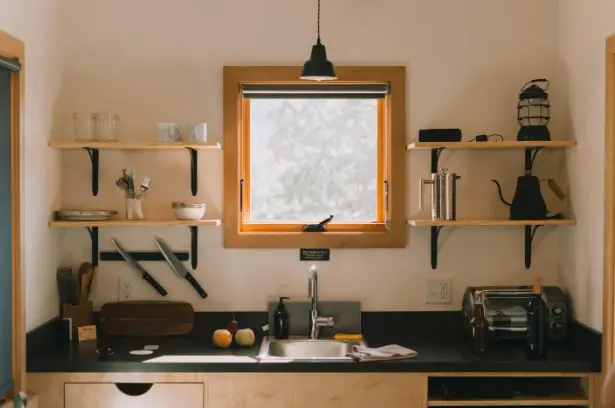12 Tips for Downsizing from a House to an Apartment

In recent years, a growing number of people are choosing to downsize from a spacious house to a more manageable apartment. This shift often comes with the desire to simplify one’s lifestyle, reduce living expenses, and eliminate the upkeep required by a larger property. In Swansboro, NC, like many other communities, residents find downsizing as a practical approach to embracing a more streamlined, less cluttered way of living. While the process offers significant financial and practical benefits, it also presents a unique set of challenges, particularly in terms of space management and personal adaptation. This article outlines tips that can help you transition from a house to an apartment with ease.
1. Assess Your Needs
- Identify essentials: Begin by listing all the items you consider essential for your daily living. This will help you determine what absolutely must go with you to the new apartment.
- Space requirements: Reflect on your current lifestyle and space usage to estimate realistically how much space you will actually use and need in your new apartment.
2. Plan Your Space
- Measurements: Before moving, take accurate measurements of your new apartment, especially the rooms where large furniture will go.
- Furniture layout: Use graph paper or a digital floor planning tool to sketch out where each piece of furniture will be placed. This helps avoid space issues on moving day.
3. Choose What to Keep
- Decluttering: Systematically sort through your belongings by category and decide which items to keep, sell, donate, or discard. This step is crucial for reducing the volume of goods you move.
- Utilize local storage options: For those items that are difficult to part with but won’t fit in your new apartment, consider renting a storage unit. Make use of Swansboro self storage solutions that can accommodate your belongings securely and conveniently.
4. Sell or Donate Items
- Sell online: Make some extra cash by selling furniture, electronics, and other valuables on platforms like eBay, Craigslist, or Facebook Marketplace.
- Local charities: For items you don’t sell, donating to local charities not only helps out those in need but may also provide you with a tax deduction. Make sure to keep the receipts for your records.
5. Digitize Documents and Photos
- Scanning: Reduce physical clutter by scanning important documents and family photos. This will safeguard your memories and records without taking up physical space.
- Cloud storage: Store your digital copies in a secure cloud service, ensuring they are accessible from anywhere and protected from physical damage.
6. Opt for Multipurpose Furniture
- Convertible pieces: Choose furniture that can serve dual purposes, such as a sofa bed or an ottoman with storage inside. This maximizes functionality without sacrificing space.
- Storage solutions: Select furniture that includes storage options, like beds with drawers underneath or coffee tables with shelves.

7. Organize Vertically
- Shelves and hooks: Utilize vertical space by installing shelves high up on walls and using hooks to hang items like coats, bags, and even some kitchen utensils.
- Tall furniture: Choose tall, narrow storage units rather than wide ones. This strategy uses the same amount of floor space but provides more storage by extending upwards.
8. Think Minimalist
- Simplify decor: Embrace a minimalist decor style to keep your living space open and uncluttered. Choose a few meaningful pieces of art or decor instead of crowding surfaces with items.
- Quality over quantity: Invest in a few high-quality pieces that not only look better but are also more durable. This reduces the need for frequent replacements and maintains a cleaner, more elegant environment.
9. Update Your Home Inventory
- List updated items: After moving and downsizing, take the time to create a new home inventory. This list should include all items you decided to keep, particularly those of higher value.
- Insurance purposes: Ensure your insurance coverage is updated based on your current possessions and apartment living to protect against any potential losses.
- Document Organization: Organize your inventory list by category and location within your apartment for easy reference. This can be particularly helpful during any insurance claims process or when planning further downsizing or reorganization.
10. Prepare for a Smaller Kitchen
- Kitchen essentials: Keep only the most essential kitchenware. Multipurpose items like a Dutch oven can serve several cooking purposes, saving space and reducing clutter.
- Storage hacks: Implement creative storage solutions such as magnetic knife strips, under-shelf baskets, and over-the-cabinet-door organizers to maximize every inch of kitchen space.
- Streamline Appliances: Evaluate your appliance needs and retain only those that are essential and frequently used. Consider appliances that combine functionalities, such as a toaster oven that can also air-fry, to save counter space and enhance efficiency in your smaller kitchen.
11. Implement a Lifestyle Change
- New habits: Downsizing often requires forming new lifestyle habits. Embrace these changes positively; appreciate the ease of maintaining a smaller space and the cost savings from living minimally.
- Community engagement: Take advantage of shared spaces and community amenities often available in apartment complexes, like fitness centers or lounges, which can enhance your living experience without taking up space in your home.
12. Stay Organized
- Routine cleaning: Keep your smaller space free of clutter by setting a regular cleaning schedule. A weekly routine can prevent clutter from accumulating and keep your apartment feeling fresh.
- Organizational tools: Invest in organizational aids such as drawer dividers, closet organizers, and decorative baskets that help keep everything in its assigned place, making the most of every square foot in your apartment.
Conclusion
Downsizing from a house to an apartment isn’t just about moving to a smaller space—it’s about embracing a new way of life that prioritizes simplicity, efficiency, and mindfulness about possessions. This transition offers a unique opportunity to reevaluate what’s truly important in life and to design a living space that reflects your most cherished values and needs. As you settle into your new apartment, allow yourself to enjoy the benefits of a simpler, more organized lifestyle. Embrace the change as not just a reduction in square footage, but as a step toward a more purposeful and fulfilling life.
